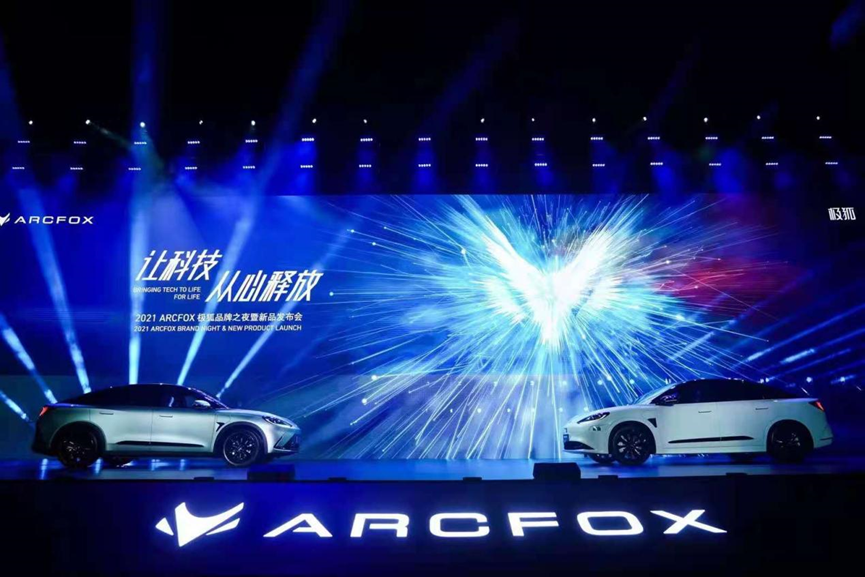*This article is reproduced from the autocarweekly WeChat public account.
Author: Financial Street Lao Li
Last night, the Arcfox Alpha S was officially launched, with a price range of RMB 251,900 to RMB 344,900. At the same time, the Arcfox Alpha S Huawei HI Edition, the world’s first mass-produced car equipped with 3 lidar sensors co-developed by Arcfox and Huawei, was also unveiled as planned, with a pre-sale price range of RMB 388,900 to RMB 429,900.
At the press conference, Liu Yu, Chairman of BAIC Blue Valley, said: “Two struggling partners, one world-class car.” Holding the same belief, the ARCFOX brand and Huawei jointly exerted their efforts for four years, bringing to everyone a groundbreaking smart car!” Many of Lao Li’s industry colleagues have expressed empathy about this statement. Regardless of how the car performs, at least an enterprise in the industry has finally been able to break the barriers of commercial interests, make an uncompromising intelligent electric vehicle, and create a new model of cooperation.
The tacit understanding between two struggling partners
The day before the release of Arcfox, a video of the Arcfox Alpha S Huawei HI Edition, which is equipped with Huawei’s ADS autonomous driving system, undergoing autonomous driving tests received a lot of attention, and was even forwarded by many fund managers and securities analysts in my WeChat Moments. The stock price of BAIC Blue Valley also rose sharply thereafter.
Stock market performance does not come out of nothing. Many friends have also seen that the Arcfox Alpha S Huawei HI Edition in the video performs well in complex traffic situations in urban areas and exhibits high robustness in generalized scenarios. Many friends in related industries forwarded and commented on the video, saying that the era of Tesla’s monopoly on the stage of advanced autonomous driving is over.
There is a consensus in the investment community that it is often not a technical disadvantage that restricts the progress of autonomous driving, but rather the labor division and interest allocation in the business world. For example, complete vehicle manufacturers want to control all technology themselves, treating intelligent technology companies as Tier1, and only want Tier1 to provide hardware such as lidar and chips. More open-minded ones would choose technology platforms offered by intelligent technology companies. No vehicle manufacturer is willing to open up all technology and cooperate deeply with intelligent technology enterprises, because everyone is unwilling to break the existing commercial rules.
This press conference is the first time that Arcfox and Huawei have openly announced their deep cooperation model. Prior to the release of Arcfox Alpha S Huawei HI Edition, friends in the investment and industry circles, including myself, firmly believed that Arcfox and Huawei would cooperate under the traditional model, most likely in the hardware or platform scope. This is because in the industry, whether it is Changan, Great Wall, or GAC, no one dares to take the step of complete openness based on considerations of their own enterprises.
However, contrary to expectations, the high-end manufacturer Arcfox and the intelligent technology giant Huawei broke the boundaries of enterprises and opened up to each other to collaborate on car manufacturing in the midst of the automotive industry reform.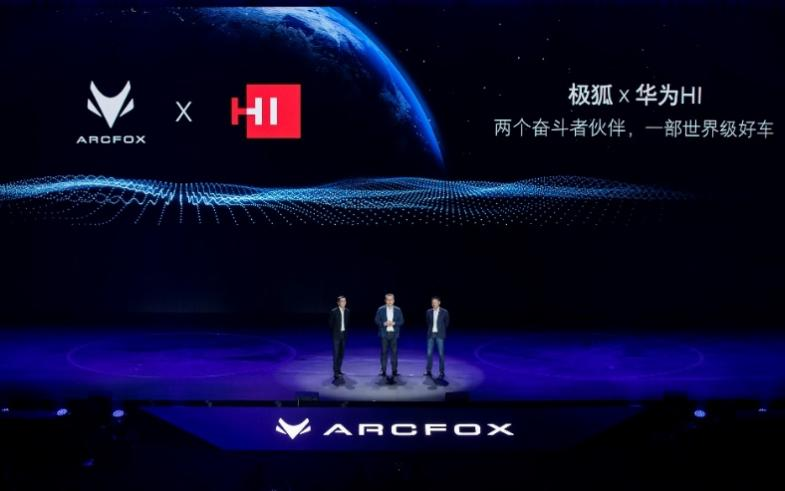
The confidence of Great Wall Motors comes from its advanced manufacturing capabilities. With the joint development with Magna, it has created the world’s first commercial IMC intelligent architecture with 5G technology, and also built an open and shared global industrial chain. The top 50 global suppliers have cooperated with 37 companies and the top 100 suppliers have cooperated with 60 companies.
As a senior industry expert once said: In the past, car companies cooperated with outside warriors by paying them, and each of the warriors fought on their own. Great Wall’s cooperation is like inviting all the warriors and forming a longmen formation. The Alpha S answers with a 708 km ultra-long endurance, a 4.2-second 0-100 km/h acceleration and the luxury feel of the chassis as well as the integrated interior.
Xu Zhijun said that Huawei has ten times the money and people, which is strength and confidence. From the basic computing and communication architecture to the intelligent driving, intelligent cockpit, intelligent electric, intelligent connected, and intelligent car cloud system front and back ends, to the full set of intelligent software and hardware such as Kirin chips, HarmonyOS operating system, LiDAR, and AR-HUD from point to line to surface, Huawei has covered every aspect of automotive intelligence. In plain terms, as long as it is related to automotive intelligence, Huawei will not rely on external forces, and will handle everything by itself.
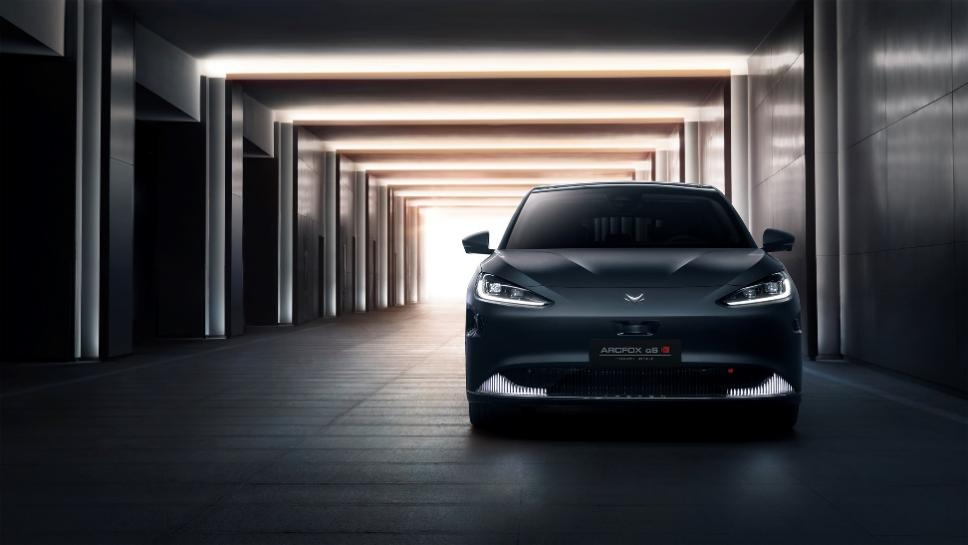
Some people say that Huawei’s smart car “HI” is similar to the “Android” of smartphones. This statement is not comprehensive. From a technical point of view, “Android” is more like the HarmonyOS system inside “HI”, and Huawei’s “HI” is more like Android+Qualcomm+Bosch in the automotive industry.
“A world-class car” is the result of cooperation, but Mr. Li and some industry friends are also thinking about it. Not all car companies can create such results by cooperating with Huawei. Perhaps other car companies will imitate this kind of cooperation, but the premise is that both parties must have mutual understanding of trust and technology, and the determination to change the industry, just like Great Wall Motors and Huawei.
Inclusive Great Wall, Full-stack Huawei
For car companies, inclusiveness is the most important tacit understanding. Wu Xiaobo said at the press conference: “If ‘technical inclusiveness’ is the foundation and ‘industrial inclusiveness’ is the path, then ‘humanistic inclusiveness,’ in my opinion, is the original aspiration and the starting point of everything.” Wu Xiaobo’s words are still difficult to understand, in layman’s terms: Great Wall Motors has achieved cooperation with Huawei through inclusiveness, and the Alpha S Huawei HI version car model has demonstrated high-level autonomous driving capabilities, bringing users a real experience.
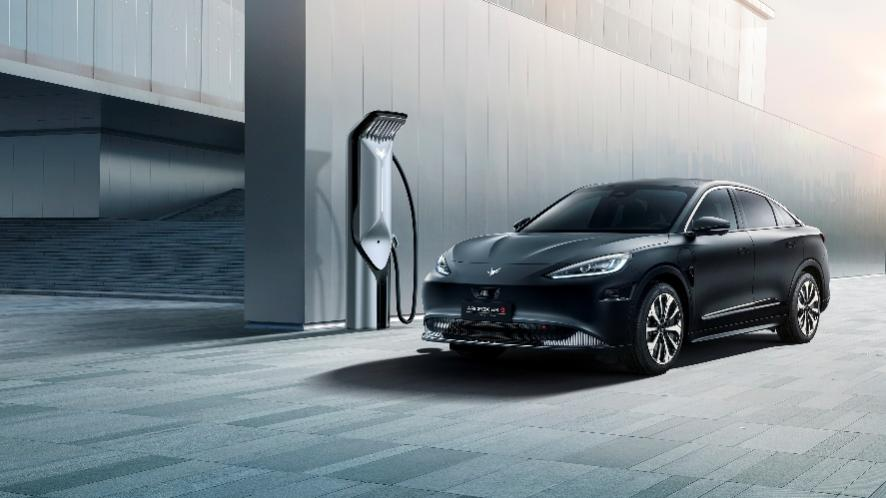 This inclusiveness is demonstrated in many details, well-known in the industry, Huawei is a very dominant enterprise. In the ARCFOX S Huawei HI version model, Huawei’s intelligent cars exclusive logo “HI” is also embedded in the front of the vehicle, yes, this mass-produced car has two logos. When I worked in the automotive industry, I once proposed to a certain European joint venture that Chinese enterprise’s logo should be placed on the front of the joint venture car and the European enterprise’s logo should be placed at the rear, but it was quickly rejected by both sides.
This inclusiveness is demonstrated in many details, well-known in the industry, Huawei is a very dominant enterprise. In the ARCFOX S Huawei HI version model, Huawei’s intelligent cars exclusive logo “HI” is also embedded in the front of the vehicle, yes, this mass-produced car has two logos. When I worked in the automotive industry, I once proposed to a certain European joint venture that Chinese enterprise’s logo should be placed on the front of the joint venture car and the European enterprise’s logo should be placed at the rear, but it was quickly rejected by both sides.
According to a friend related to the cooperation company where I used to work in Huawei, when the “HI” logo scheme was proposed, many car company managers promptly rejected it. Last year, Huawei Intelligent Vehicle BU was incorporated into Consumer BG. Perhaps since then, Huawei has decided that the smart car business should move from the background to the foreground, and it is the Ji Hu that has helped Huawei achieve this breakthrough.
For a long time in the past, automotive companies were accustomed to creating value in their own fields with the rule that the commercial interests of enterprises are paramount and any commercial behavior must be based on this premise. Under such a rule, automotive companies only gained immediate benefits but could not touch the bigger cake in the long term.
Technological progress is gradually giving birth to new commercial social rules, and enterprises can integrate new technologies, new scenarios, and new business models with their original business models, constantly innovating and creating value.
In the past decade, after traditional mobile phones became smart phones, smart phones have become a platform for the industry to continuously create value. Whether it is Meituan, Didi or Douyin, Kuaishou, their value is created based on the smart phone platform. Smart cars are also transforming into a “create value platform” now, and autonomous driving is the transformative technology in this platform. The rapid development of the Alpha S Huawei HI version autonomous driving technology is derived from the phrase “full stack”.
Full stack, originally from Facebook engineer Calos Bueno’s 2010 article “The Full Stack”, in layman’s terms, means that the enterprise has a global technology layout, and any problem in any link can be solved by itself.
Autonomous driving relies on the enterprise’s rapid iteration in the three fields of algorithm, data, calculation and sensing hardware. Like the wooden barrel principle, any shortterm will lead to a worse overall effect. Many autonomous driving friends of Mr. Li who worked in vision are jumping to Huawei because their former employers cannot make chips, which means their upper limit can’t match the level of Tesla, which reflects the attractiveness of Huawei’s full stack to some extent.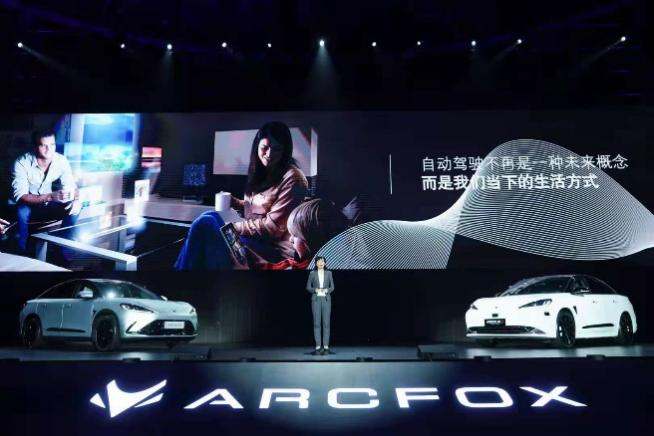
ADS has a customized super central supercomputer ADCSC, with a minimum starting computational power of 400 TOPS, and a high-tier computational power of up to 800 TOPS. According to Lao Li, the reason why Ji Hu has become the industry’s first and currently the only car company to adopt ADS is mainly due to the company’s inclusiveness and prediction of industry trends.
Lao Li also has his own basis, because the capital’s waiting for autonomous driving has reached its limit, and now autonomous driving companies urgently need to mass-produce. So in 2021, everyone found that companies like Wen Yuan and Xiaoma started to work on truck autonomous driving, Baidu and Didi started to build cars, and Ji Hu should have judged this trend three or four years ago, and launched mass production at the current node, leading everyone by half a step.
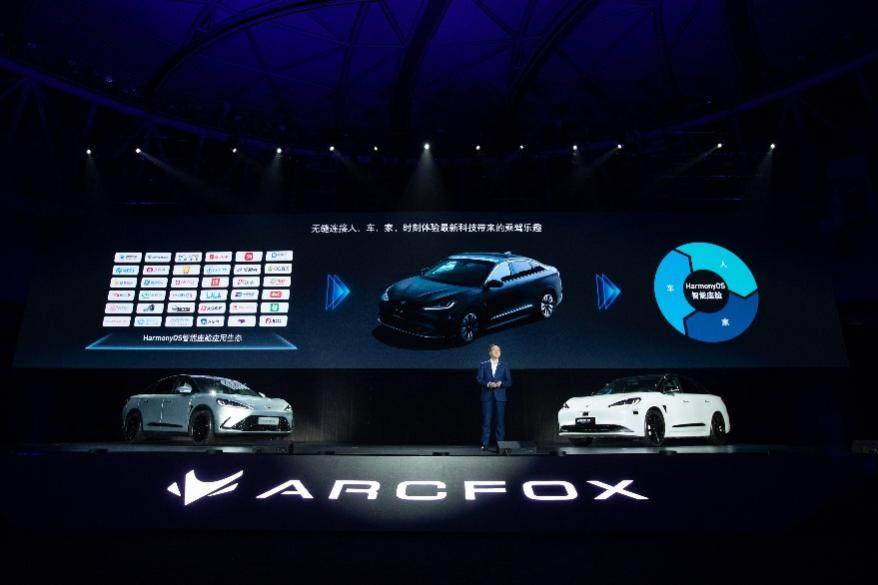
Friends may ask, since Huawei can do full-stack, can’t other car companies and Ji Hu just use Huawei ADS directly? The idea is good, but the reality is different. Every car company has its own little abacus, and they are not very interested in building a full-stack autonomous driving software and hardware. Therefore, they simply regard Huawei as Tier1 and integrate it into their own system.
Huawei naturally also sees through the car companies’ calculations. In 2018, it released the Autonomous Driving Mobile Data Center MDC, which covers chips, platforms, operating systems, and development frameworks. The MDC’s products mainly serve as standalone autonomous driving components for car manufacturers, but the effect is far inferior to ADS. The highest computational power of MDC is only 352 TOPS through parallel connection, while ADS, which has higher computational power, reaches 800 TOPS.
Take a small step together and promote a big step for the industry
In 1969, Neil Armstrong stepped on the moon and said: “This is one small step for man, one giant leap for mankind.” From Earth to the moon, the United States has been preparing for years for this small step.
Breaking the rules of the business world only requires companies to take a small step, but it is difficult, in the past, people only break the operating habits of the business world in special times such as every financial crisis or major epidemic, because when they have to change, just like in the face of the COVID-19 pandemic, they found that offline work could be completed online.
From a business perspective, Ji Hu has taken a small step, breaking the rules of the automobile company’s pedestal theory and dominance of the front desk, embracing Huawei in an open posture. From the naming of the car models, it can be seen that the Alpha S is equipped with the Huawei HI version, with both Ji Hu and Huawei.As for the traditional automakers, many of them see technology cooperation in a way that AI is the single point while my pedestal is the car. I need to embed AI into the car and share all the user benefits. Therefore, the traditional whole vehicle enterprise treats AI enterprises as Tier 1, cooperating with them while guarding against them mastering too much technology. This is where Huawei’s MDC product comes in handy.
On the other hand, there are two extreme views of AI companies towards automobiles: one is supplier-focused, treating cars and other machines as external devices controlled by AI. The company provides technology to automotive enterprises from the background and does not need to face users directly. The user experience is unrelated to their own business, such as Nvidia and Mobileye. The other view is challenger-focused, where AI is seen as dominant in automobiles, and the company aims to manufacture cars and face users directly, getting all the profits. For instance, Baidu and Didi.
Many fund managers around me often say that technology companies need to find the third way of development, neither being suppliers nor challengers, in order to achieve the maximum economic benefits. At present, it seems that Huawei has found the third way. In cooperation with Xpeng, Huawei is not Tier 1, but it faces users directly with Xpeng, enhancing the ADAS experience. Huawei also embraces Xpeng’s high-end intelligent manufacturing capabilities, providing users with an excellent driving experience.
The advantages of this cooperation are vividly demonstrated in the user experience. For example, the Alpha S Huawei HI Edition with the Harmony OS intelligent interconnection cockpit supports up to 23 application scenarios, including Unicom calls, Amap, Huawei Video, and Bilibili. The cornerstone of this cockpit is Xpeng’s electronic and electrical E/E architecture, which is highly expandable, intelligent, and secure. By contrast, the cockpit design of other automakers would often fall into the “bucket effect.” For instance, some new forces aim to monopolize the onboard applications, but without a complete ecosystem like Huawei’s, they can only provide users with semi-finished products.
Currently, many automakers and technology companies are exploring various developmental paths with a trial-and-error approach due to the unclear development trend in the industry. They remain verbally open but are very cautious in behavior. In contrast, it is Xpeng and Huawei’s clear understanding of the long-term pattern of the intelligent electric vehicle industry, the new industry operational rules, and innovative new user experiences that enable them to open up to each other technologically, benefit each other commercially, and promote each other in user experience, mining opportunities in the face of great industry uncertainty.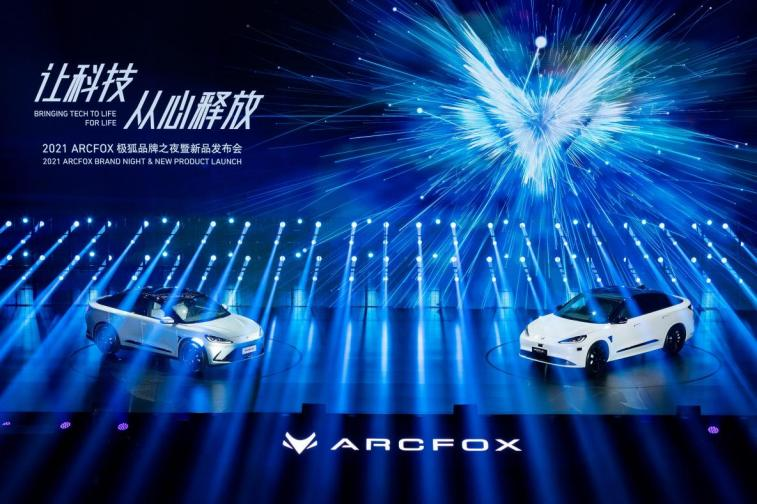
“Making the cake bigger” is an important principle of China’s economic development. Certainly, the intelligent electric vehicle industry is a very imaginative market, and various companies all hope to achieve some results. However, at the current stage, the industry is not yet mature and the cake has not been made bigger. Both Jihoo and Huawei recognize this situation. The difference is that both companies agree that it is difficult to make the cake of intelligent electric vehicles bigger alone, and that joining hands is the most valuable, beneficial, and advantageous method for users, the industry, and both parties.
Jihoo is a leader in high-end intelligent manufacturing, and Huawei is a leader in high-end technology. Combining the two is the best landing point, with a cooperative and inclusive attitude and a pattern of breaking the framework. Both parties are using the “spark” to ignite the “wildfire” of the industry.
From a larger perspective, this is the inevitable path of China’s high-end manufacturing industry. Technology is not the patent of technology companies. Joining technology with high-end manufacturing will transform the entire commercial system from the industry side, making the Chinese real economy “cake” bigger and stronger.
This article is a translation by ChatGPT of a Chinese report from 42HOW. If you have any questions about it, please email bd@42how.com.
